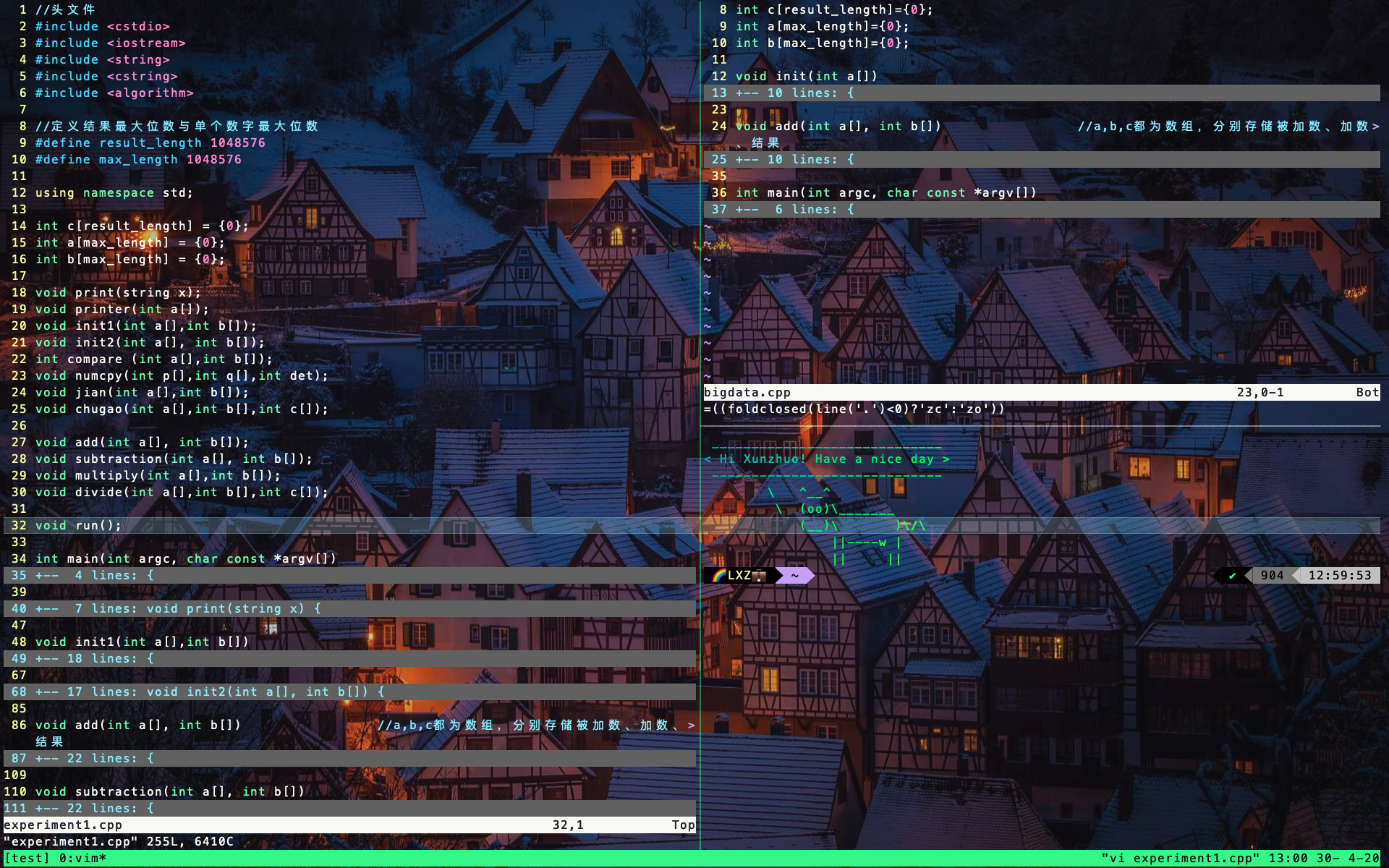

Tmux iterm2 code#
However, the code above will not work because you cannot use ⌘ in tmux keybindings, and SHIFT usage is also very limited. For example, to resize pane in iTerm, we use “ ^⌘↑”, let’s map the same keystroke in tmux in somewhat naive way: bind ^⌘↑ resize-pane -U nf and map tmux actions to those keybindings. The idea is to map keystrokes in iTerm to trigger tmux actions. Today, let’s see how we can use familiar iTerm keybindings while working in tmux environment. Override iTerm key mappings to trigger tmux action We’ll address these topics in my future posts. Issues with scrollback buffer and integration with OS clipboard are highly vital, that you can even decide to give up adopting tmux.

Indeed, right now I’m using iTerm just as a tunnel to tmux 😄 Personally, I decided to go ahead with tmux and its features, and rely less on iTerm2 specific features. Instead of single keystroke like ⌘⌥->, you need two keystokes: prefix followed by another key, mapped to specific tmux action.


When I run a long-running command in one pane, I can switch to another pane and be notified when no more output appears in previous pane for some interval iTerm has something similar, but it’s only about notifying you when execution returns to command prompt, and requires installing extra shell integration Monitor window for activity or silence.These previously were taken by OSX menu bar, iTerm window frame and iTerm tabs row. This which allows me to work in a distraction-free environment and also get extra 3 rows.
Tmux iterm2 windows#
Having status line and set of named windows inside it, I can turn iTerm to full-screen mode.Includes CPU, memory, online/offline status, battery, user, host, and date time. A status line with system-wide information.Similar to tabs in iTerm, but you can give them a name iTerm2 vs tmux on local machine: benefits and drawbacks Benefits: So I’ve decided to give it a try, and today I can share benefits and drawbacks with you. When I was learning tmux, I had been returning to same question again and again. “Given iTerm already can create multiple virtual windows inside a single ‘physical’ window, can split, swap and resize panes, do I really need to use tmux on my local machine instead of iTerm?” Google here, Google there, after a while you grasp concepts like terminal multiplexing, windows, pane splitting, and understand tmux usage on remote machines to persist session state and survive abrupt disconnections.Īt some point of time, you might wondering about tmux usage locally. And you’ve heard about tmux, and decided to give it a try. So you’re using iTerm2 terminal emulator on OSX. Tmux experience inside full-screen iTerm with 2 remote sessions nested in a local one


 0 kommentar(er)
0 kommentar(er)
